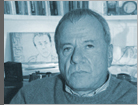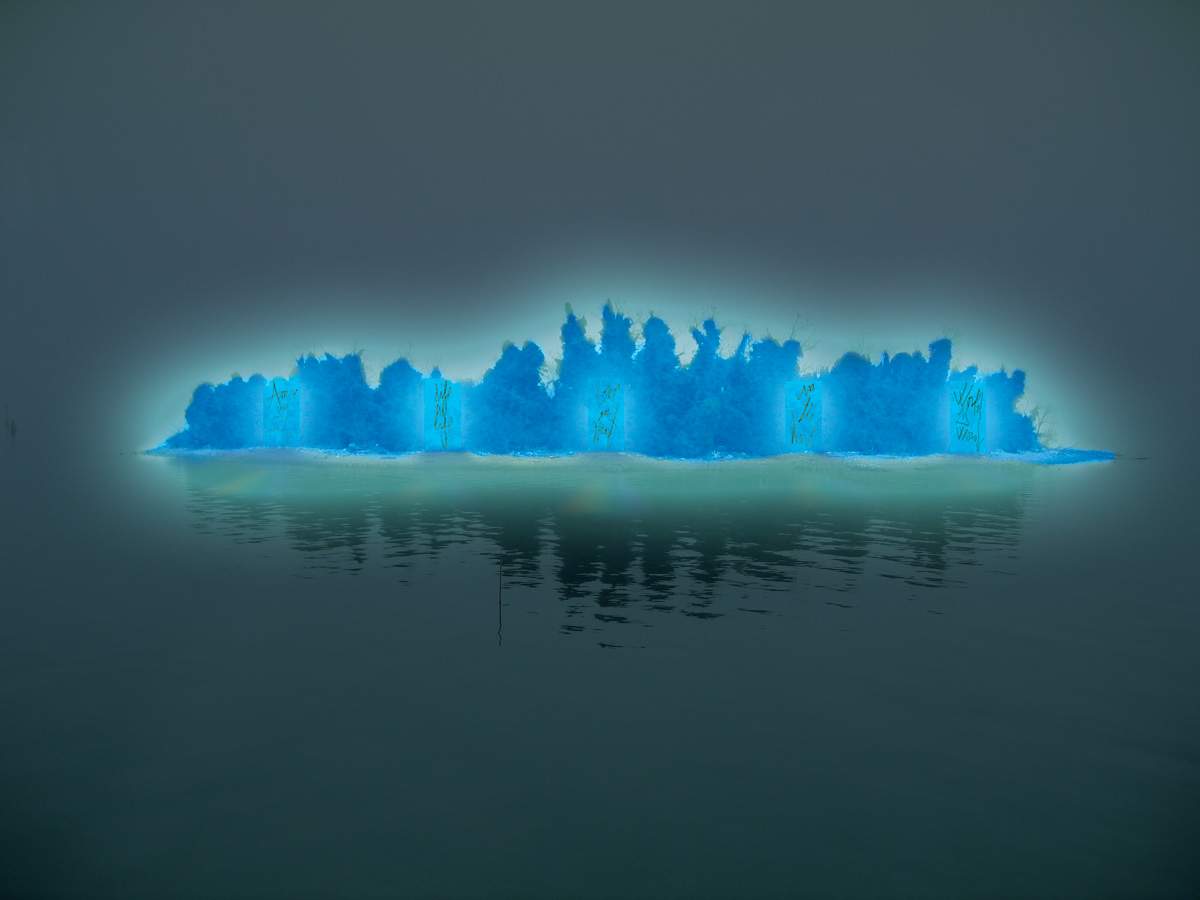![]() La
51ma Biennale di Venezia 2005 - Isola della Poesia di Marco Nereo
Rotelli - Home - Isola
Virtuale
La
51ma Biennale di Venezia 2005 - Isola della Poesia di Marco Nereo
Rotelli - Home - Isola
Virtuale
Let Art Have its Say
Achille Bonito Oliva

In Rotelli, art responds throug the complexity of technique and interdisciplinary cross-fertilisation capable of restoring that tone that the univocity of a single language is so hard put to achieve.
Only by proclaiming and explicitly enacting this interdisciplinary cross-fertilisation is it possible to bring about an event capable of draiwing even with existence, in terms of real occurrence. An exemplary case of this was Rotelli’s installation on the façade of the Petit Palais in Paris in 2000 of fifty reflecting steel sheets bearing a pictorial version of verses from Baudelaire’s Horologe.
Here art springs from this challenge issued by the artist to the world, from the awareness of the modification first produced by Gutenberg when he introduced reproduction by printing, then gradually by other discoveries, not just technical, but also more subtly scientific, down to the impalpable discoveries of Freud’s psychoanalysis.
Everything contributes to make the artist feel that literature is too linear in its writing to be sufficient on its own to reproduce the complexity of his relationship with reality. Hence the deflagration of the linearity of the page and of horizontality of printed writing and his escape from the confines of the frame.
Poetry comes about, therefore, from the proclamation of an expressive need of space and time, which never live separated the one from the other, not even in the artist’s magmatic awareness, but always in a symbiosis that the work must bring to expression.
Just as painting ventures forth along the path of liberating the visual grammars typical of its history, so poetry ponders the problem of its purely literary tradition being outdated and establishes the possibility of investing the word with figurative representation.
In the past, poetry used to be the locus of phantasmagorical evocation, of the foundation of a sign that referred back to images that in any case exploded elsewhere, not right the on the page, but in the mind of the reader, somehow reaping the harvest of tradition focused entirely on abstraction, rather than on the directly figurative representation of the image.
The rarefaction of verse, the way it plays on reducing the verbal sequence, even how poetry is accustomed typically to break the line and start a new one, all these are the fruit and the consequence of a poetic mentality focused on the power of abstraction intrinsic to the word that always refers to things outside itself and outside the physical frame on the printed page.

Isola
della Poesia seen from the
sea. All rights reserved.
Breve biografia
Marco Nereo Rotelli was born in Venice in 1955. He works in Milan. He graduated in architecture in 1982.
Marco Rotelli carrys out works of light in the urban context. He lit up buildings like the Petit Palais in Paris and the Millennium museum of Bejing. Temporary works like the Gibellina’s square, the Milvio’s bridge in Rome, and the Tonnara of Palermo for stable works. His peculiarity is to create with the light a dimension of thought and poetry. He doesn’t aim to special effects but to an ethical and an aesthetical dimension. He brought a shining dimension in the Carrara’s quarry but also in the basilica of Santa Maria del Fiore in Florence, Biennale of Venice.
IDEA OF LIGHT
On one hand he dissembles with the light the hours that pass, the light modulates from crepuscolar to auroral colours. That permits to the observer light’s dimension. Frequently the projection of words of important poets offers to the observer a dimension of meditation.
Marco Nereo Rotelli artistic intent is to create a solid relationship between art and other linguistic shapes. According to this purpose he collaborates with the major poets and Italian artists: literary men, philosophers (Massimo Cacciari, Enzo Vitiello, Manlio Sgalambro), musicians (Franco Battiato), photographers (Joe Oppedisano, Giò Martorana), film directors, actors, architects (Enrico Ghezzi), poets (Mario Luzi, Maria Luisa Spaziani, Edoardo Sanguineti, Andrea Zanzotto). The latters are very important for Rotelli who concentrates on the relation between colors and writing. In his pictures poetry joins colors and the subjects represented. Light hangs, spreads over the composition and emphasizes every part of it. Marco Nereo Rotelli works very hard on this item and that brings him to test new fields, new contexts, involving in his projects the major contemporary artists. This action allows poetry to intervene in everyday life and to shoulder the responsability of an ethic message. The installations of Rotelli have involved different Sicilian sites in order to highlight some local architectural works against death penalty. Thanks to the project "Life and Light", the façade of seven historical buildings was illuminated by verses in blue light with the aid of high tech materials such as laser, lead, computer writer. Thus the author carried out an installation about the "Words of Hegel" at the castle of Salerno commissioned by the Institute of Philosophy in Salerno. In July 2000 he was elected to create an urban installation for the Mediterranean Poetry Festival in Lodève (France). On the 17th October 2000, Rotelli has created an extraordinary installation on the façade of Petit Palais in Paris.